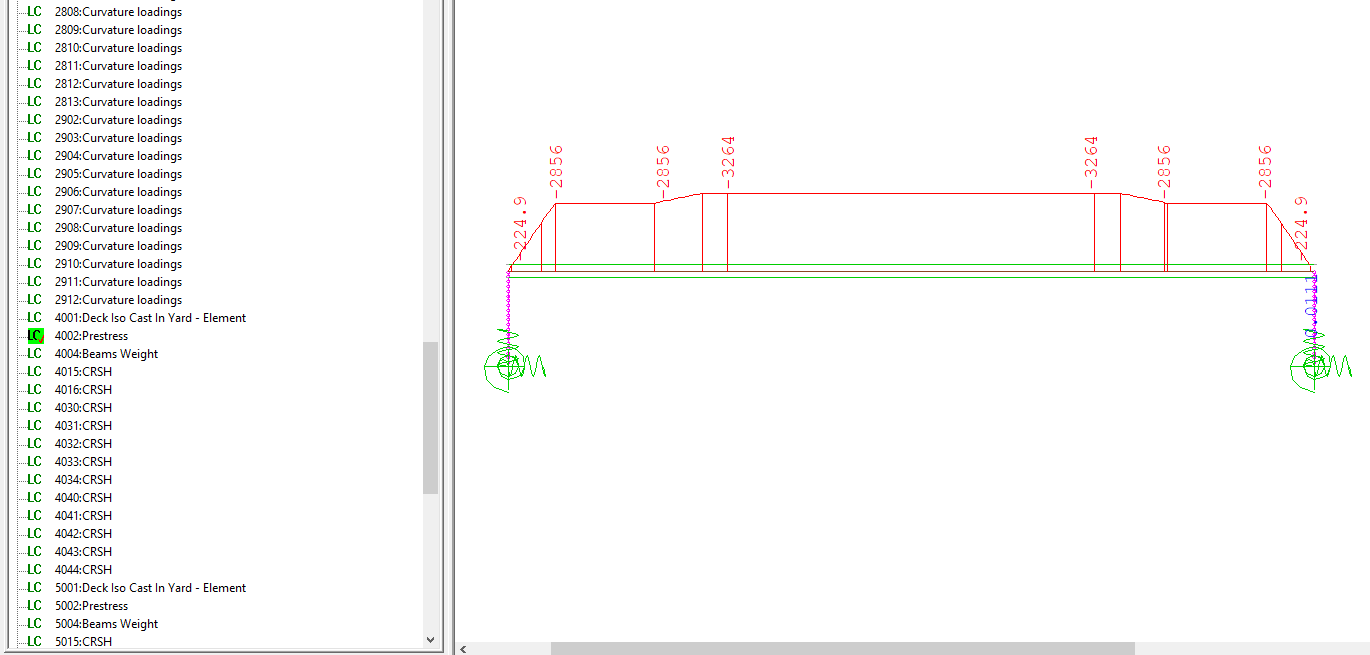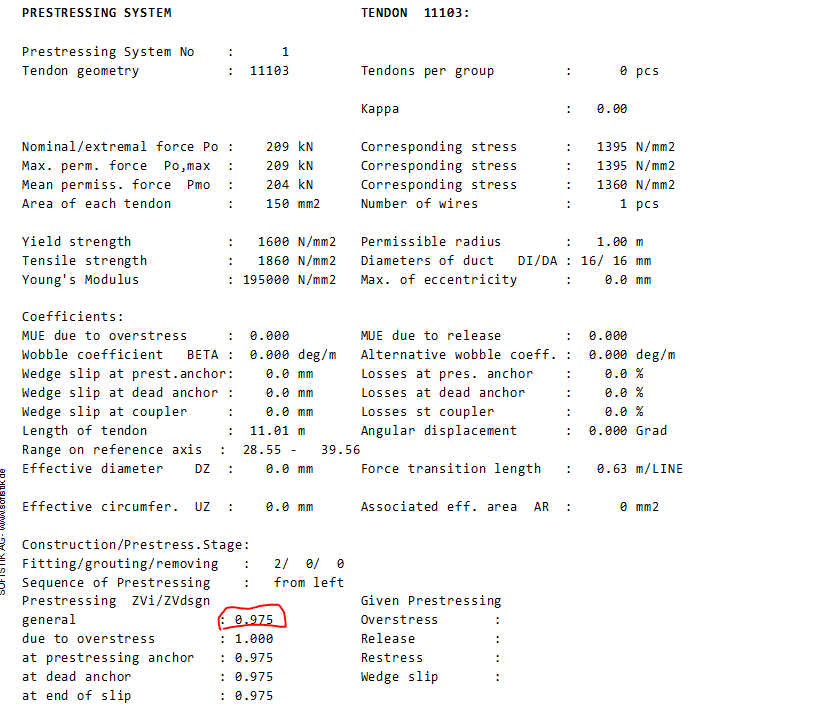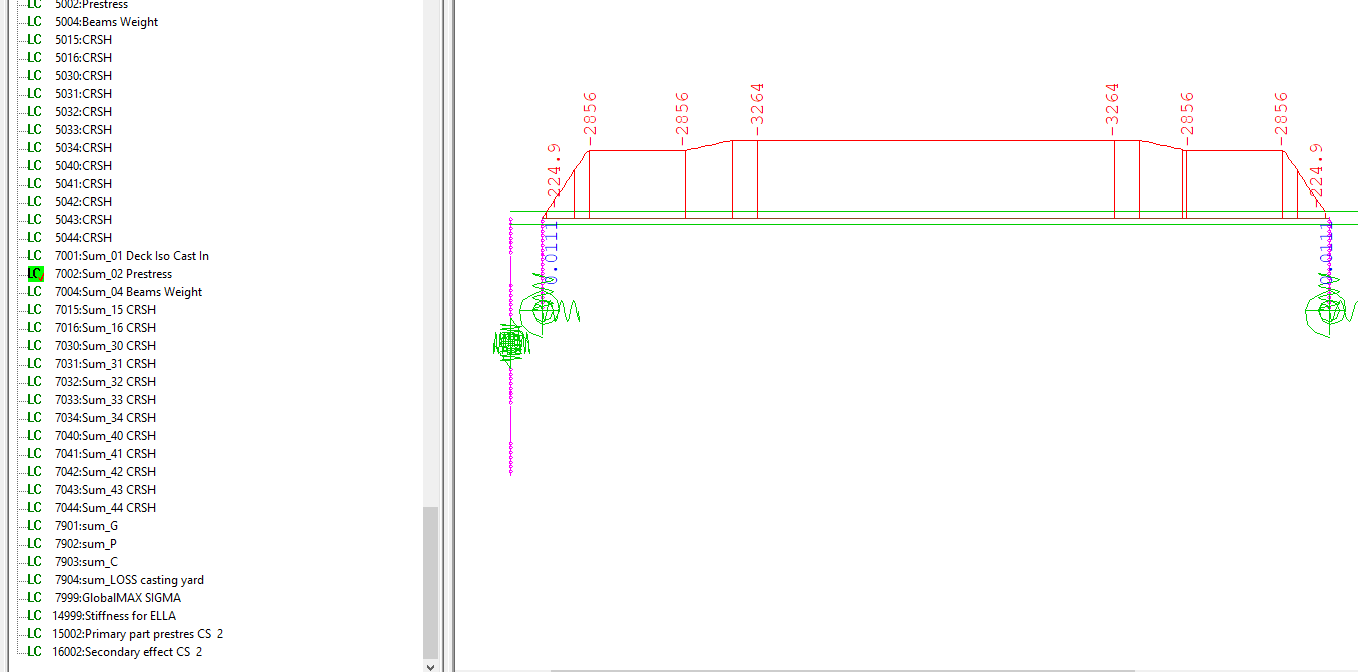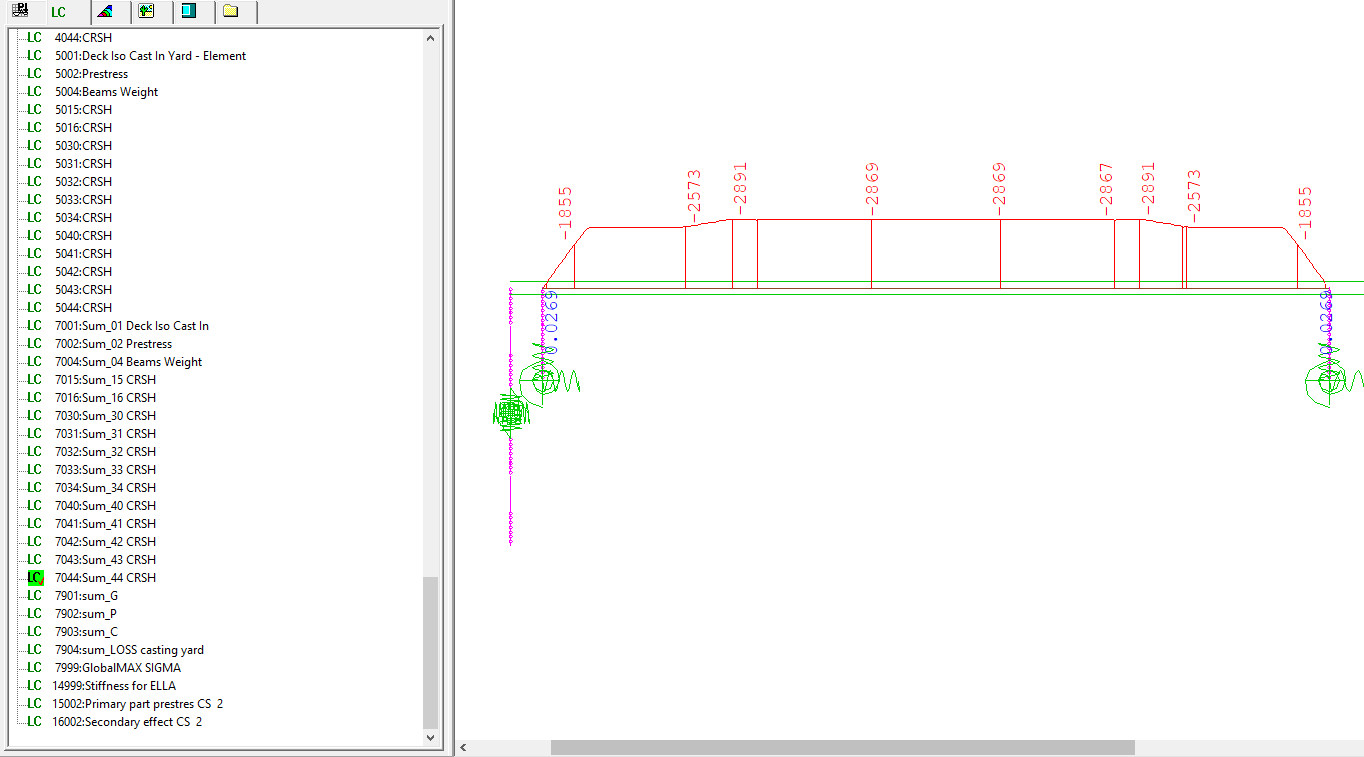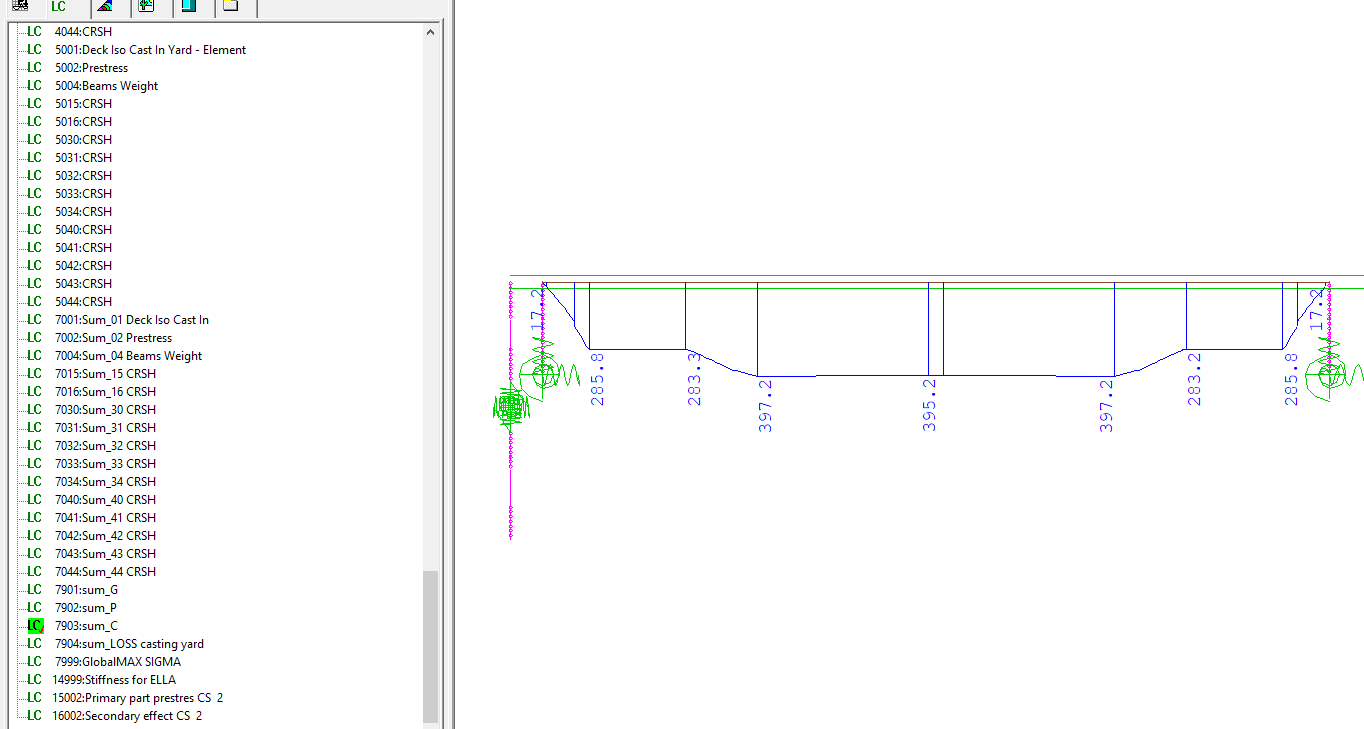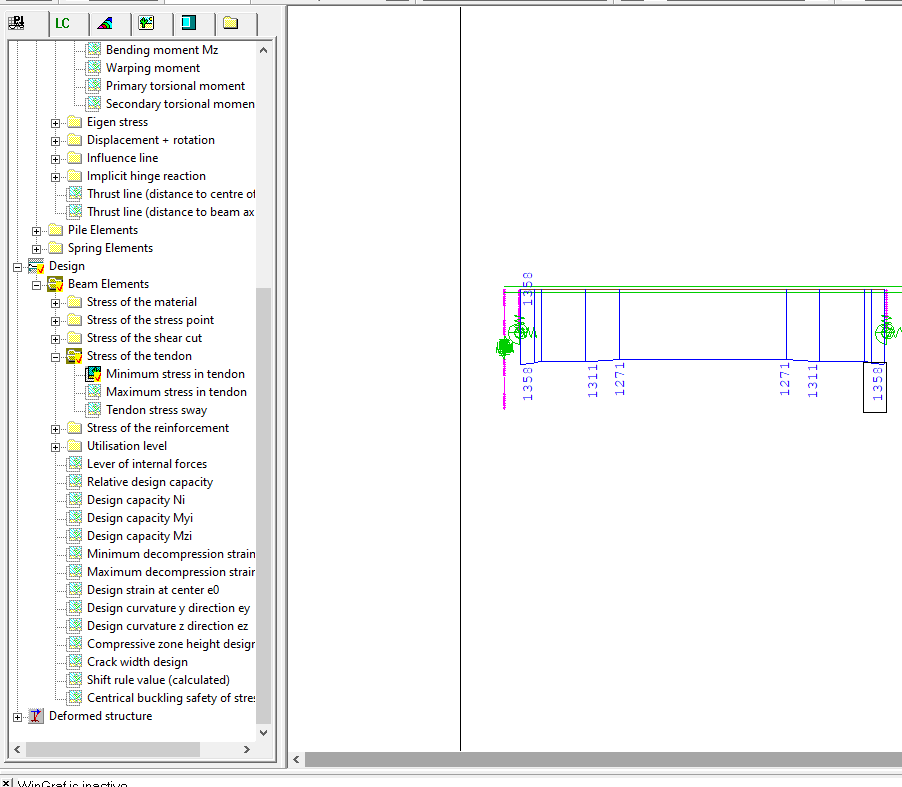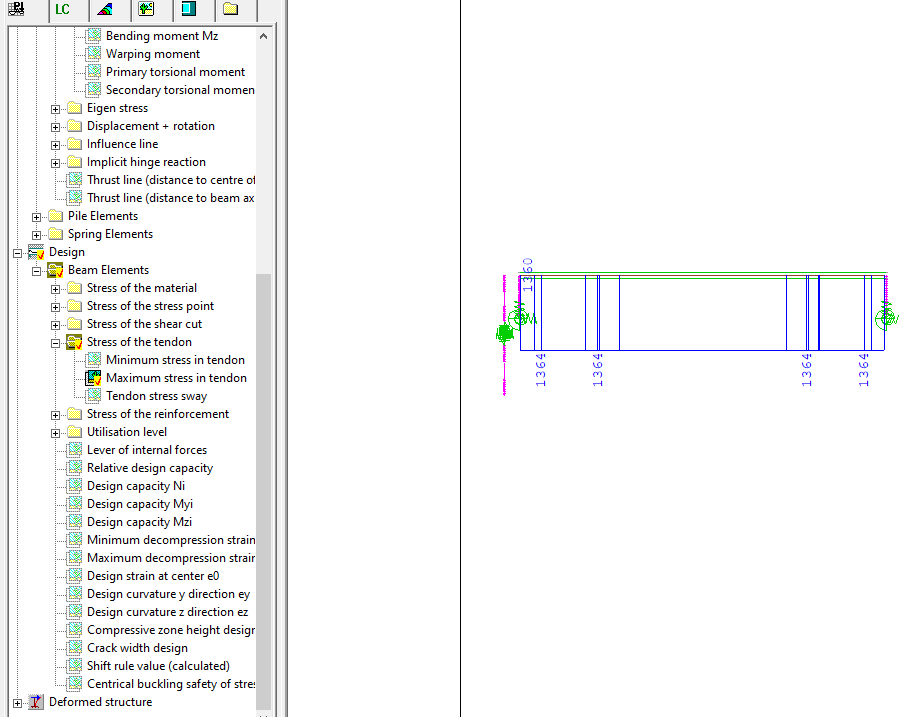I am modelling a 3 span bridge with Precast pretensioned beams with integral connection at Pier location & bearing support over the end abutments. The prestressing system has been defined as
let#AZ 150 $ Cable Area (mm2)
let#ZV 0.751860#AZ/10^3 $ Prestress force per tendon (kN)
let#MU 0.0 $ fricition coeff.
let#BETA 0 $ wobble factor [°/m]
let#KS 0 $ slip[mm]
let#ECC 0 $ excentricity of tendon within duct [mm]
let#MINR 1 $ minimum bending radius [m]
let#DO 15.7 $ external diameter [mm]
$ PREESTRESSING DEFINITION
SYSP NOPS 1 NO 0 MAT 4 ZV #ZV AZ #AZ LITZ 1 MINR #MINR BETA #BETA BETG #BETA MUE #MU MUE- #MU $$
ECC #ECC CDIS 40 CEDG 150 SP #KS SC #KS SF #KS VP 0 VC 0 VF 0 LPRE 0 LCOP 0 LFIX 0 $$
DO #DO DI #DO TITL “Pretension T15”
I’m not sure whether the system is considering the Elastic deformation loss in the system. I’ve tried with different combination of "CS " definition in the tendon module, i.e., CS ICS1 2 ICS2 3 (prestressing activation- CS2, grouting - CS3), CS ICS1 2 ICS2 0 (for immediate bond), CS ICS1 2 ICS2 2 (same stage grouting/bonding) but in any of the case expected loss (~5-6%) couldn’t be achieved. Also, the segregation of losses (Elastic deformation, Short term relaxation/Long term relaxation, Short/Long term creep/shrinkage) I’m not able to extract. The overall loss I’m getting is around 12-13% which is quite low in comparison to the general loss expected in PSC members. I am designing as per Eurocode 2 & for creep/shrinkage and relaxation losses, considering the default values.
Can anyone suggest on these?

